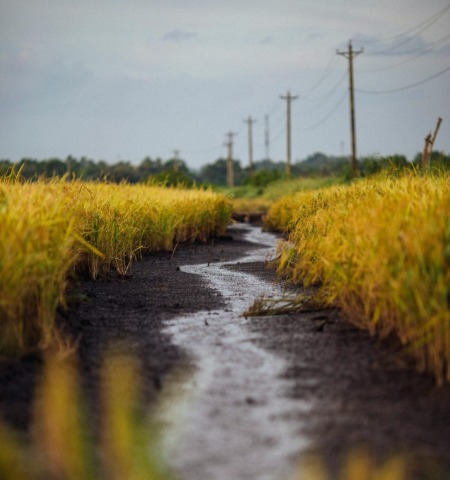Agricultural land designated by the Ministry of Agriculture as non-arable due to pollution is premitted for renewable energy installations without agricultural integration requirements. Landowners can receive stable rental income without needing to change land classification.
Installation on Polluted Land
In January 2021, Ministry of Environment issued the "Guidelines for Solar Power Installation on Polluted Land", providing a multi-purpose development strategy for polluted land. This policy enables solar energy developers to collaborate with local governments, improve pollution conditions, and enhance land value while ensuring landowners receive financial benefits. The initiative supports environmental sustainability and creates a win-win scenario for all parties.
Eligibility Requirements

Polluted Land Criteria
- Agricultural land officially designated for soil pollution control or remediation before January 2023.
- Excludes land contaminated by mercury-heavy metals.
Applicable Scope
Includes both land undergoing remediation and land where remediation is completed, enabling better land utilization
Compensation Cleanup Costs
If the land remediation was funded by the Soil Pollution Fund, we compensate the Environmental Protection Bureau for cleanup costs
Installation Guidelines
- Solar setup must not exceed 70% of the total land area
- Foundation spacing ensures proper sunlight penetration
- Minimum 1.5-meter separation from adjacent farmland for buffer zoning
Landowner Benefits
- Rental income surpasses fallow land subsidies
- Land management prevents illegal encroachment
- Land restoration enhances soil quality and promotes natural regeneration
Ethical Operations
- No large-scale excavation or illegal waste disposal concerns
- Land classification remains unchanged.
- No tax burdens—land reverts to agricultural use after lease expiration
Solar installations are silent, safe, and environmentally clean
Collaboration Model
- With landowner approval, a certified environmental technician evaluates remediation feasibility and cleanup costs.
- We submits an application to local authorities for approval.
- Once authorized, a land lease agreement is signed, and remediation plans begin.
- Alternatively, we covers previous remediation costs.
- Landowners can choose between fixed rental payments or electricity revenue sharing, ensuring full legal and contract protection.
Installation Process
- Landowner signs an agreement with Jincheng Energy.
- Jincheng Energy submits an application to the Environmental Protection Bureau for review and cost assessment.
- Landowner signs a lease agreement with Jincheng Energy, receiving rental payments per contract terms.
- Jincheng Energy repays remediation costs and signs an administrative agreement with the Environmental Protection Bureau.
- Jincheng Energy submits a permit request to local government authorities.
- Upon remediation completion, solar power installation is finalized.




